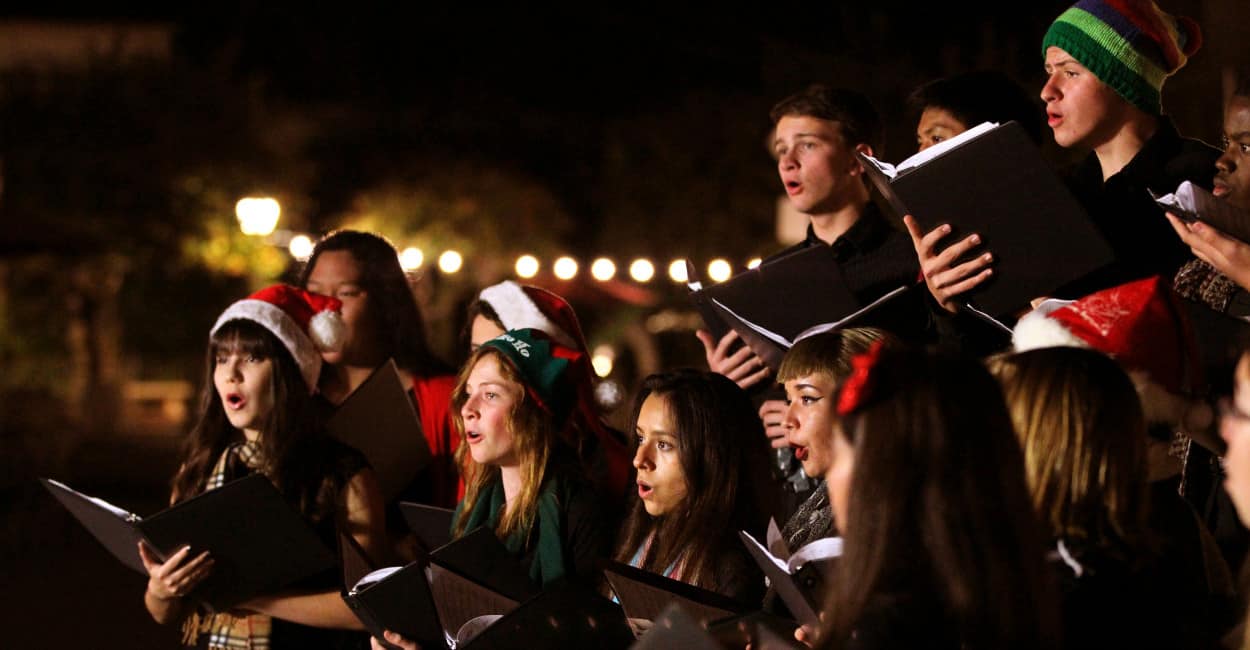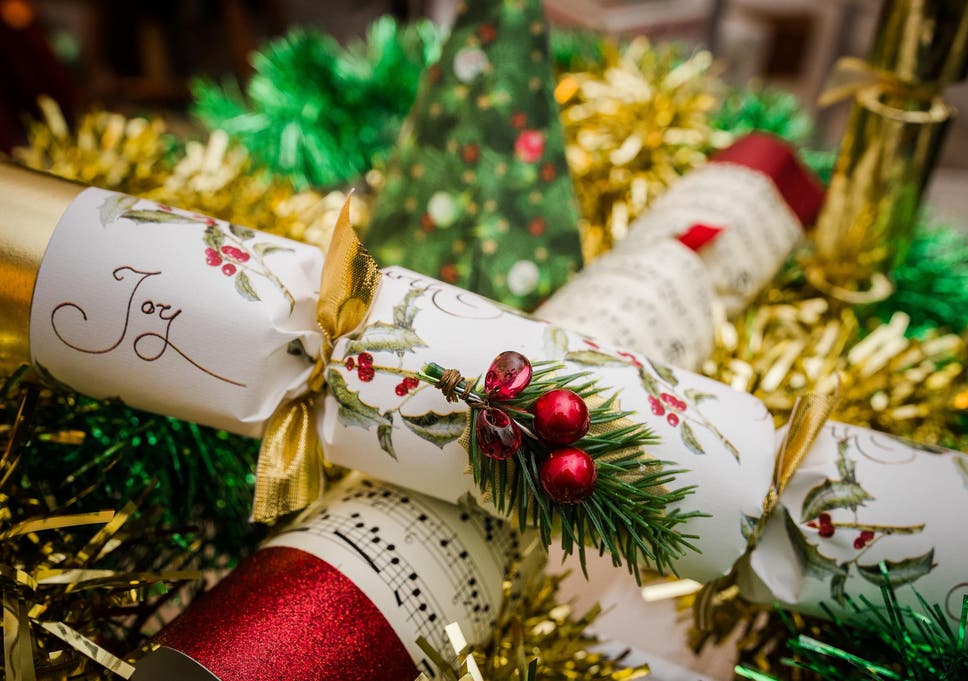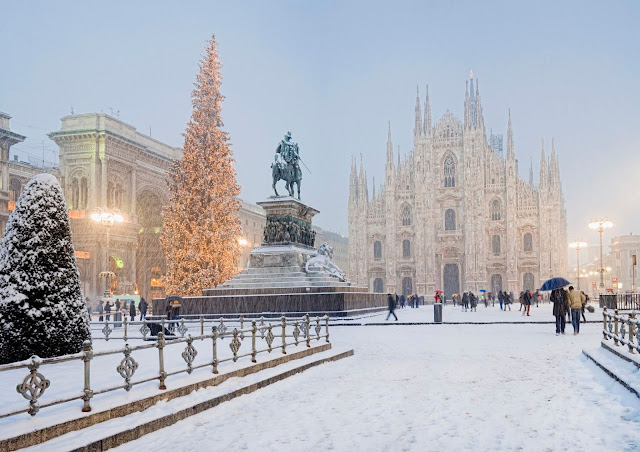Christmas : Traditions and Their Origins
Christmas is
celebrated annually as an ethnic and religious festival honoring the birth of
Jesus Christ, primarily on December 25 worldwide among billions of people.
Christmas is a whole festival filled with traditions, from decorating tree with
lights and ornaments to counting down days of December with Advent calendar.
While Christmas is celebrated all across world and every other region has some
of its own traditions but there are some classic holiday traditions that are
shared all over the world. Christmas is a full package of different classic
traditions, since many traditions count back to ancient times Christmas wouldn’t
be same without the originating history that made the tradition what it is
today.
Discover the
fascinating stories behind these holiday traditions from Christmas carols to
sending cards and Christmas food to Santa Clause.
ADVENT CALENDAR
Advent calendar is a
special calendar used to countdown the days of advent in anticipation of
Christmas. Now Advent calendars are commonly used to countdown from start of December
until Christmas day, since the date of First Advent Sunday varies from November
27 to December 3. Advent Calendars were first used by German Lutherans in 19th and
20th century.
Centuries ago, importance of Christmas caused many Christians feel
that it was inadequate merely to mark off only one day for celebrating this
religious festival So, in gratitude and awe at what happened at first Christmas,
they felt the need for a term of preparation, and also teach their children the
incredible meaningfulness of Christmas.
CHRISTMAS CARDS
Tradition of Sending
Christmas Cards dated back to 1843 and according to some other sources 1844
when William Dobson, an English artist drew up some pictures for use at holiday
season in England the trend spread locally and soon arrived America.
In 1846
Cole and Horsley saw the potential growth of sending Christmas cards and
started production of Christmas Cards which is now over 10B Dollar industry.
Now a days Christmas Cards act as a source of catching up with friends and
family at what they have been up to whole year.
HANGING STOCKINGS
Hanging stockings at
fireplace can be traced back to the legend of gift giver- St. Nicholas. When a
widower was worried that he could not be able to provide gifts to his three
daughters, St. Nicholas came to know about it and filled the stockings of his
daughters hanged to dry at fireplace with gold coins.
St. Nicholas was later
referred by the Dutch as Sinterklaas and eventually, by English- speakers as
Santa Claus. Since then Children hang their stockings by the fireplace in hopes
for filled with gifts by Santa Claus.
CHRISTMAS TREE
Commonly used as Christmas
trees today, Evergreen trees are considered to be lucky since they remain green
even in the harsh winters. Origin of tradition of decorating Evergreen tree can
be traced back to three different stories all originated from Germany – making it
likeliest place of origin. Mostly accepted custom from these three is when
Martin Luther was walking through woods and was mesmerized by the snow shines
on evergreen trees under the moonlight on the eve of Christmas.
In order to recreate the similar effect, he cut up a tree and brought home decorated it with lights and ornaments. Later on, this trend amplified when Germany’s Prince Albert put up a Christmas Tree at Windsor Castle in 1841.
In order to recreate the similar effect, he cut up a tree and brought home decorated it with lights and ornaments. Later on, this trend amplified when Germany’s Prince Albert put up a Christmas Tree at Windsor Castle in 1841.
MISTLETOE
Hanging mistletoe in
the home is an ancient pagan practice adopted by early Christians. Tradition of
Kissing under the mistletoe dates back to Celtic legend and originated in
England. Mistletoe is considered of bringing good luck.
The tradition was spread widely in Victorian Era when couples kissed under mistletoe as doing so was thought to lead to marriage.
The tradition was spread widely in Victorian Era when couples kissed under mistletoe as doing so was thought to lead to marriage.
CHRISTMAS CAROLS
Caroling can be
traced back to medieval times, carols were dances and songs of happiness and
praise. Afterwards singing carols carried over into the Christian era.
Exercise of going caroling turning into a holiday ritual can be traced back to 19th century when holiday became more commercialized, so songbooks with Appealing Christmas tunes became popular.
Exercise of going caroling turning into a holiday ritual can be traced back to 19th century when holiday became more commercialized, so songbooks with Appealing Christmas tunes became popular.
CHRISTMAS CRACKERS
Christmas crackers were first made by an English Sweet-maker Tom Smith in late 1840s, which were inspired by French bonbons wrapped in colorful shiny paper and had mottos and riddles included inside each. They were not very popular until Tom found a way to make it Crack when pulled open, after that it became a trend of Christmas crackers.
Later on Tom,
Walter and Henry sons of Tom Walter added hats and gifts to it. Now- a-days
Crackers that are used are cardboard tubes wrapped around in shiny paper and
contain colorful party hat, a novelty gift or toy. Party hats have a shape like
a crown that symbolizes the crowns worn by the Wise Men.
TURKEY
Turkey is an
important Dish of Christmas Dinner, originated in Mexico and were brought to
Britain by William Strickland in 1526. Henry VIII is considered first Englishman
to bring turkey to Christmas dinner in England.
It was Edward VII in late 19th century who made Turkey a regular Christmas dish rather than a fashionable cuisine in high society. Today All across world Turkey is being made specially on Christmas Dinner stuffed with different vegetables and rubbed on with a mixture of spices.
It was Edward VII in late 19th century who made Turkey a regular Christmas dish rather than a fashionable cuisine in high society. Today All across world Turkey is being made specially on Christmas Dinner stuffed with different vegetables and rubbed on with a mixture of spices.
CHRISTMAS COOKIES
Decorating Cookies
on Christmas is a tradition related to ancient Solstice celebrations in winter.
Decorating sugar cookies in different Christmas related figures and objects and
placing it near fireplace for Santa Claus is a tradition of Christmas without
which holiday is incomplete.
Lately, besides sugar cookies that are used today Gingerbread, snickerdoodle and cookies with nuts were used as Christmas cookies.
Lately, besides sugar cookies that are used today Gingerbread, snickerdoodle and cookies with nuts were used as Christmas cookies.
SANTA CLAUS
Santa Claus is the
most important event of Christmas without which no one can think of a
Christmas. Santa Claus originally name St. Nicholas is also called as Gift
Giver. There are different figures used to interpret St. Nicholas in different
cultures.
In the US he's Santa Claus, in France he's Père Noël, and in Finland, people celebrate the Yule Goat. The Legend of Santa Clau dates back to place now know Turkey, where a priest St. Nicholas was a very generous man and gave away his wealth to poor and distributed gifts amongst people.
In the US he's Santa Claus, in France he's Père Noël, and in Finland, people celebrate the Yule Goat. The Legend of Santa Clau dates back to place now know Turkey, where a priest St. Nicholas was a very generous man and gave away his wealth to poor and distributed gifts amongst people.
This Christmas enjoy your holidays with friends and family and if you are planning a trip abroad, contact here for latest deals and discounts on meet and greet all across UK.












Comments
Post a Comment